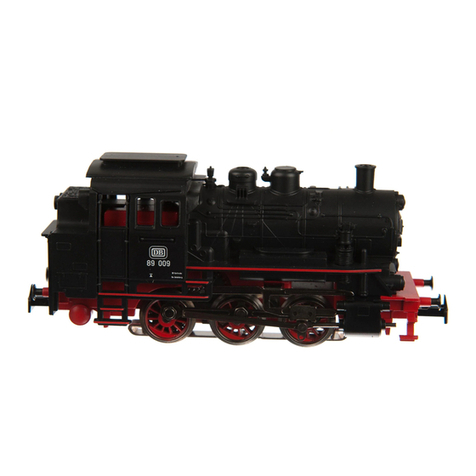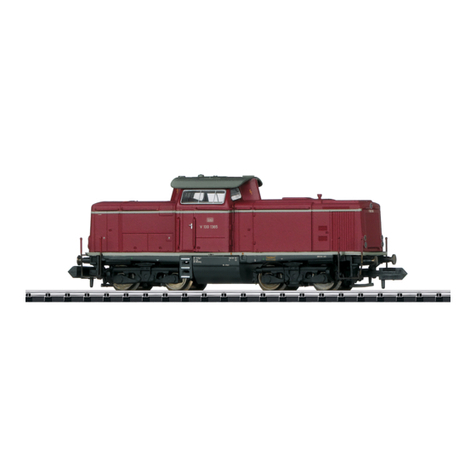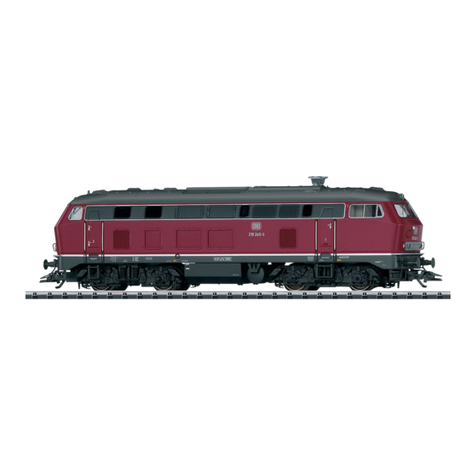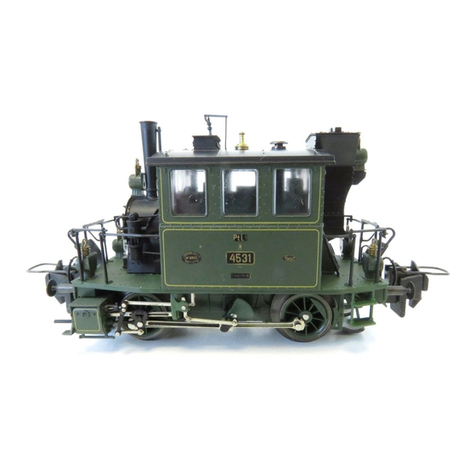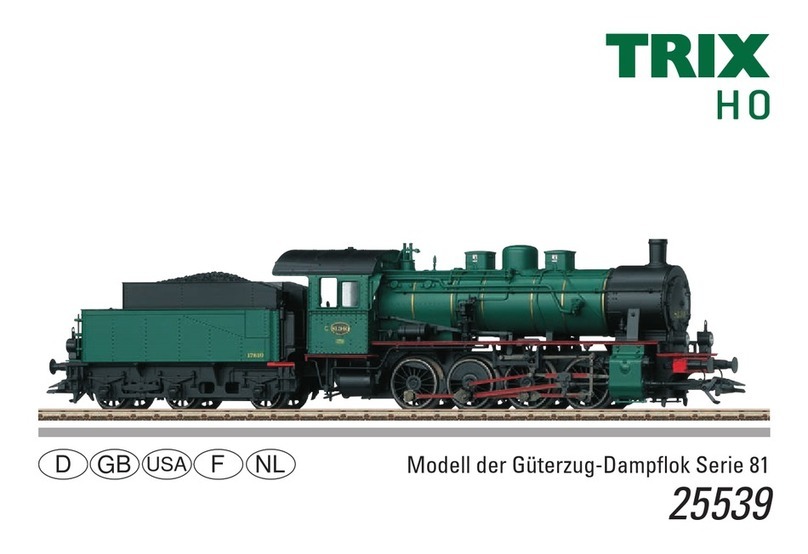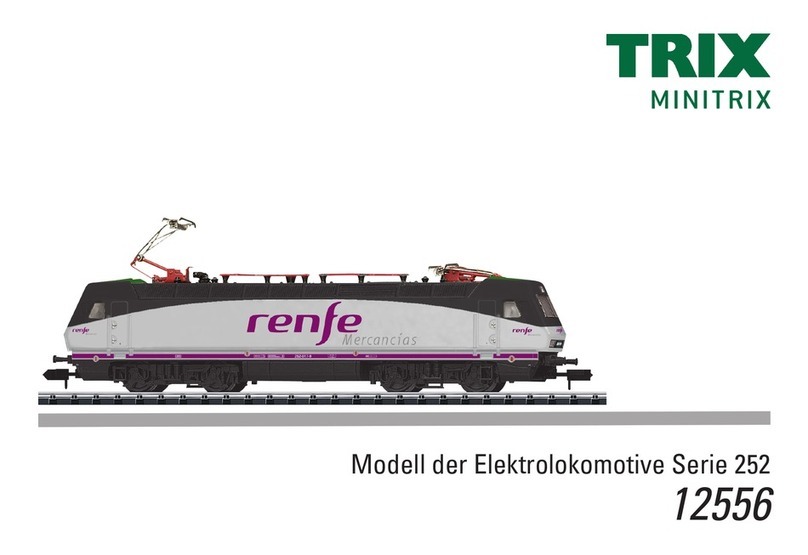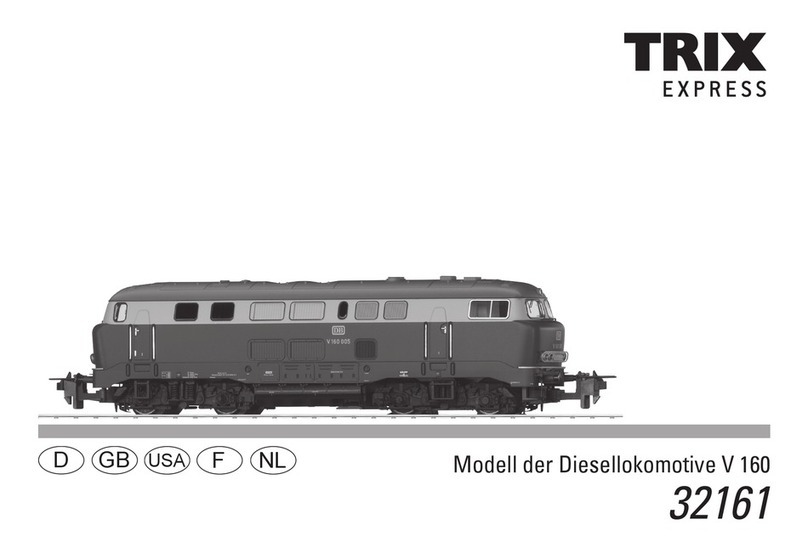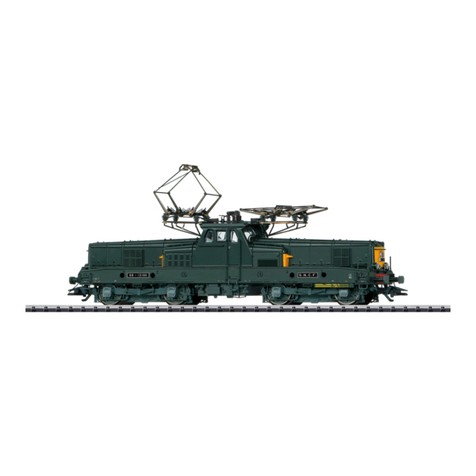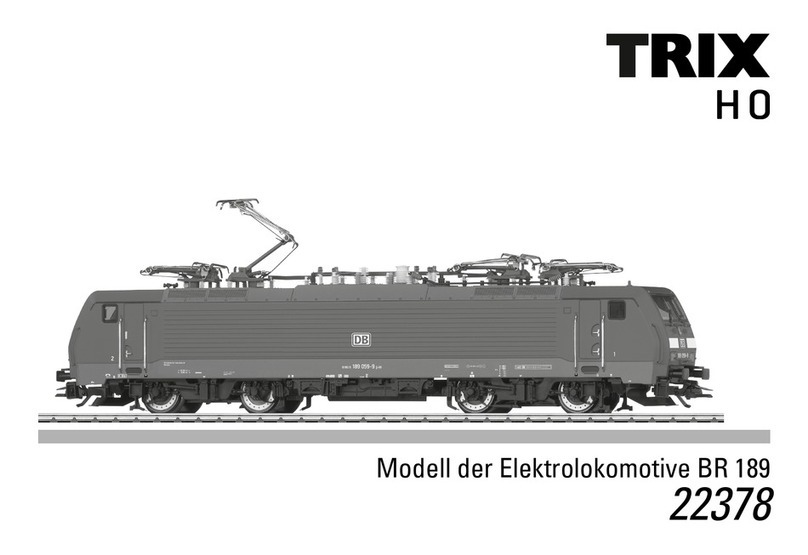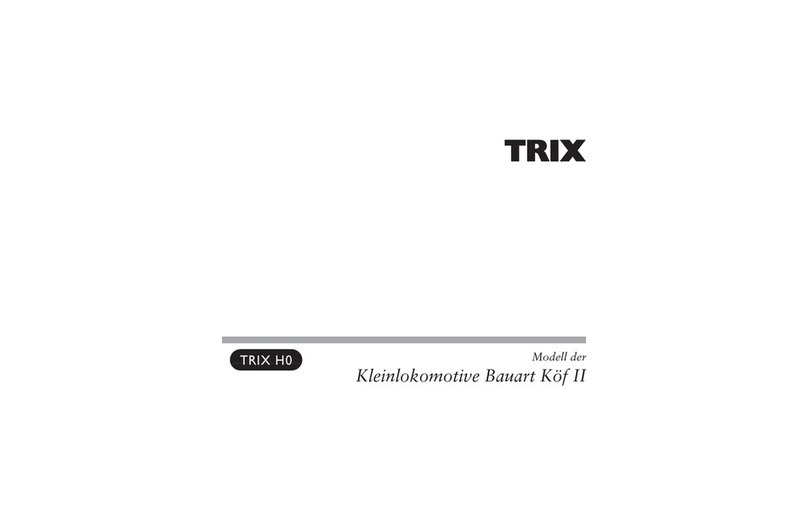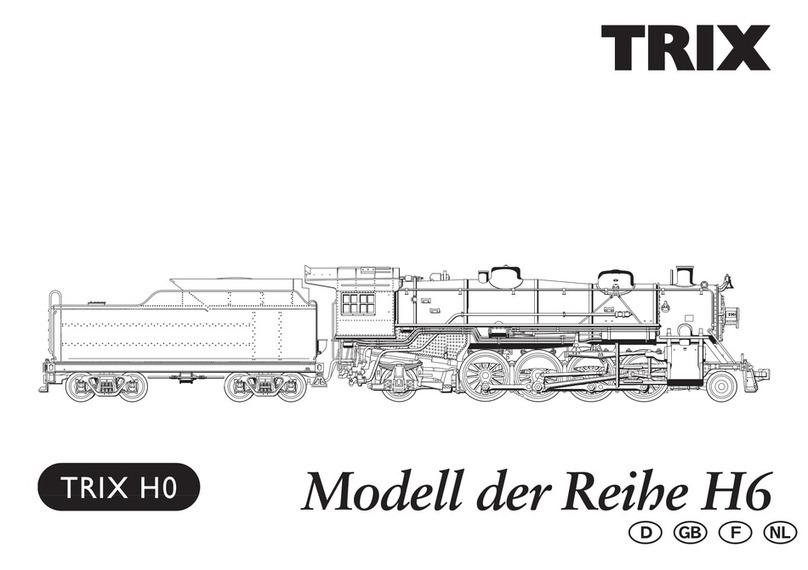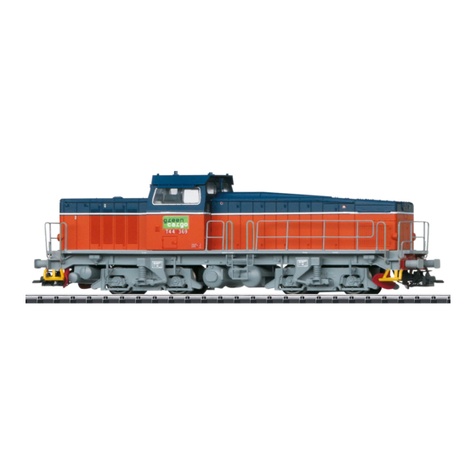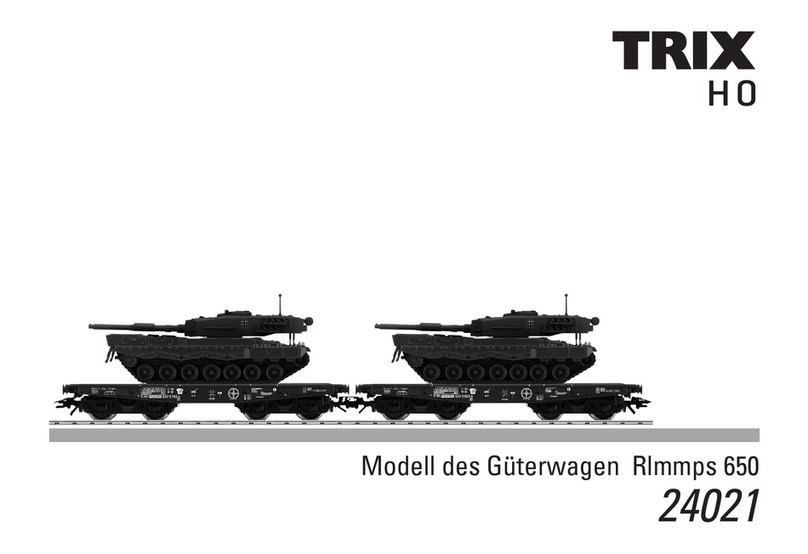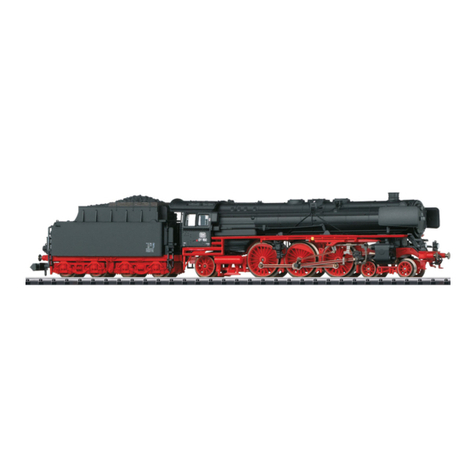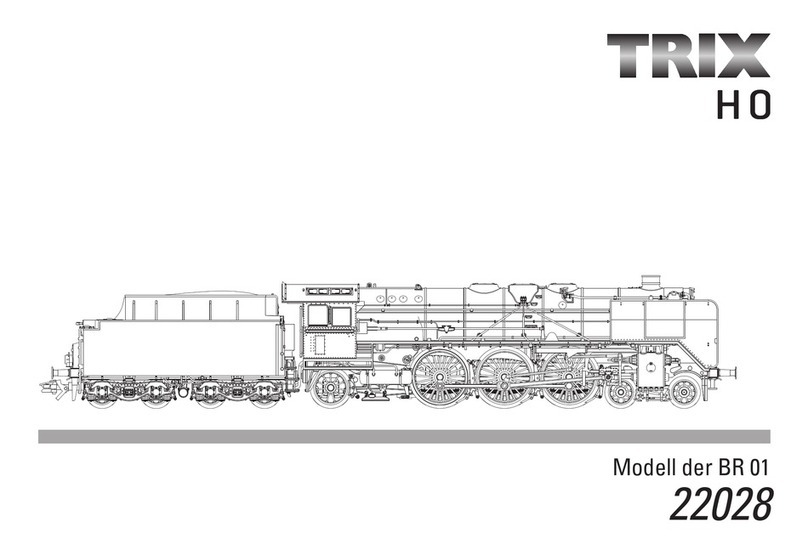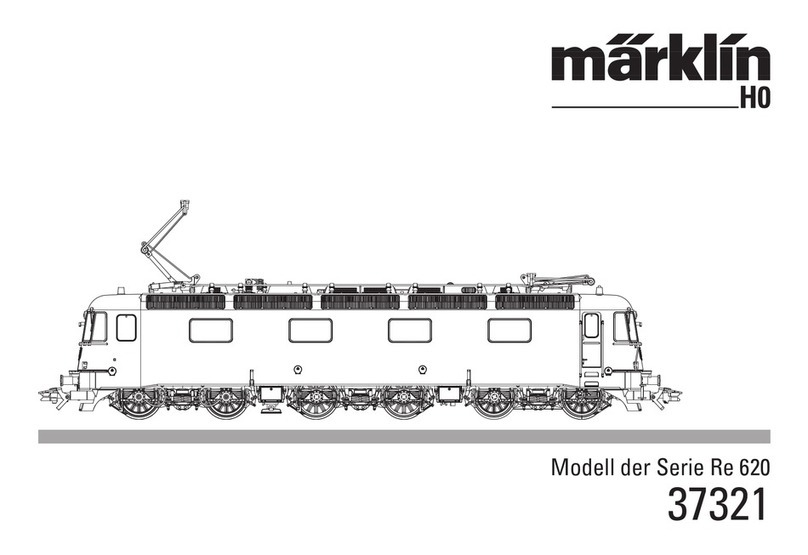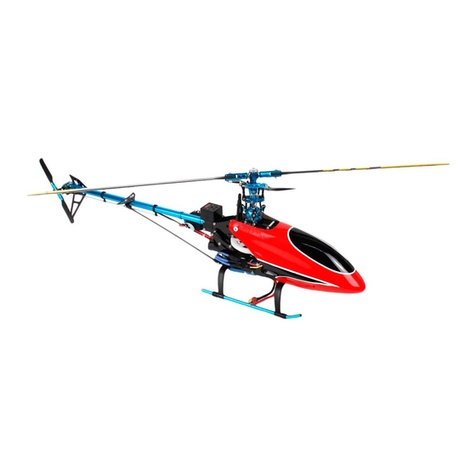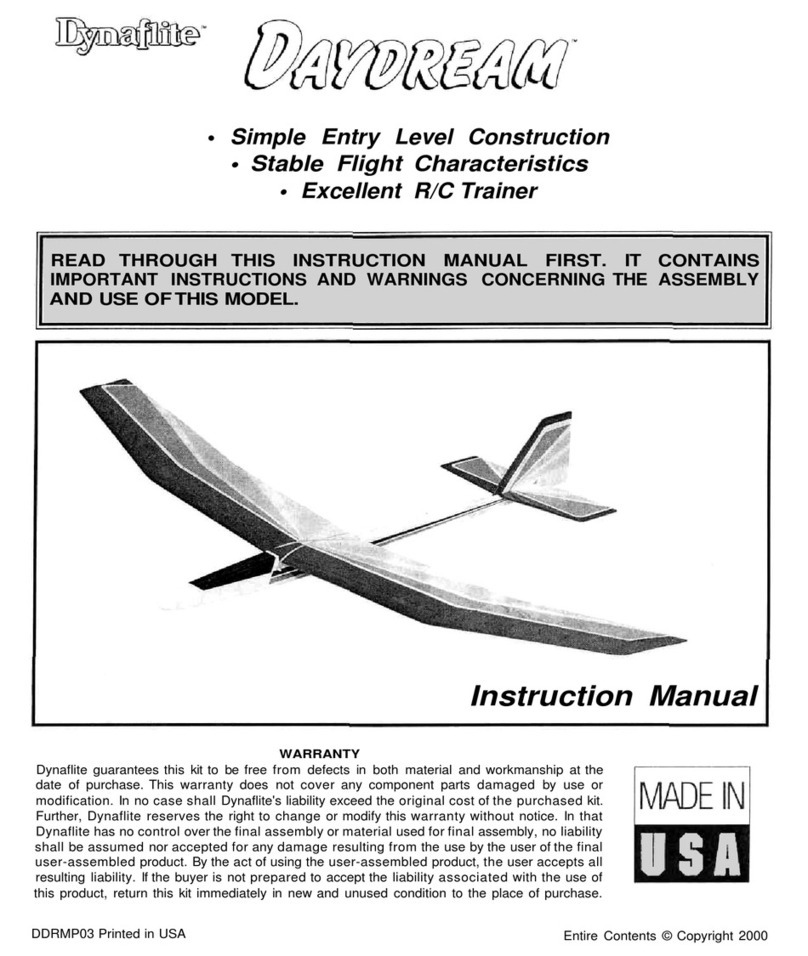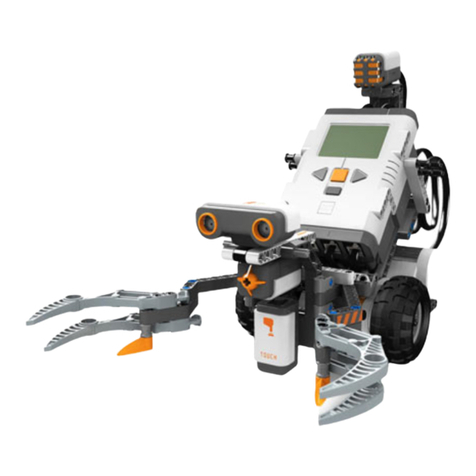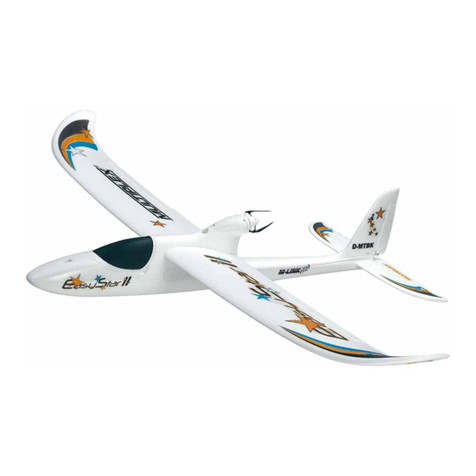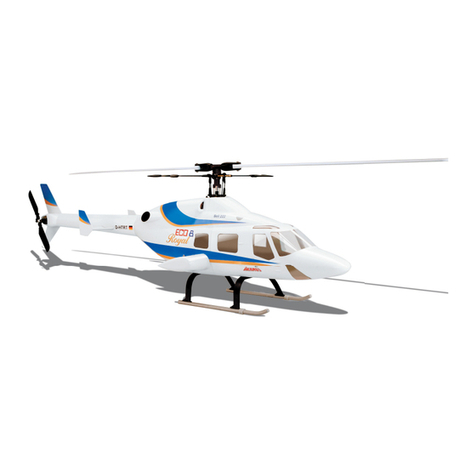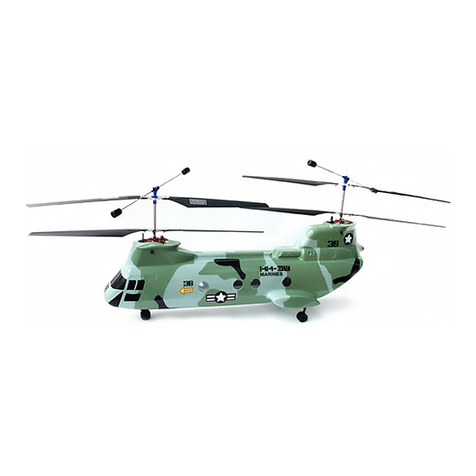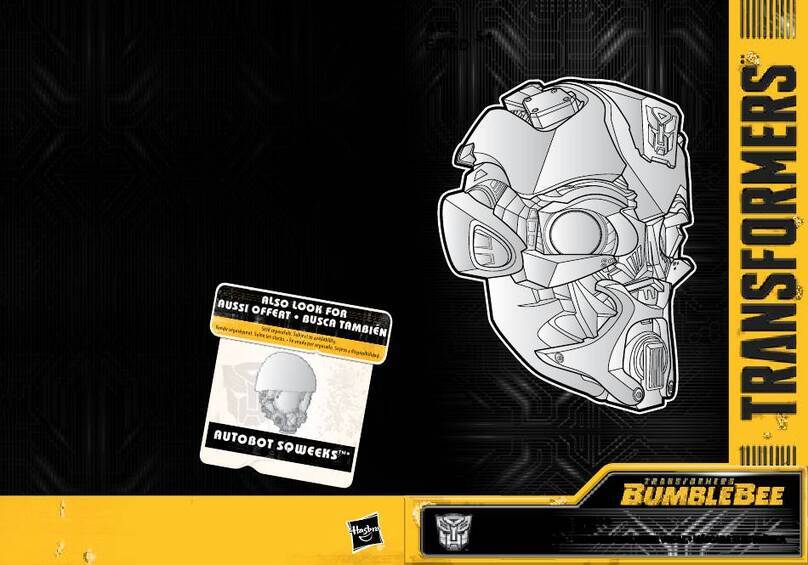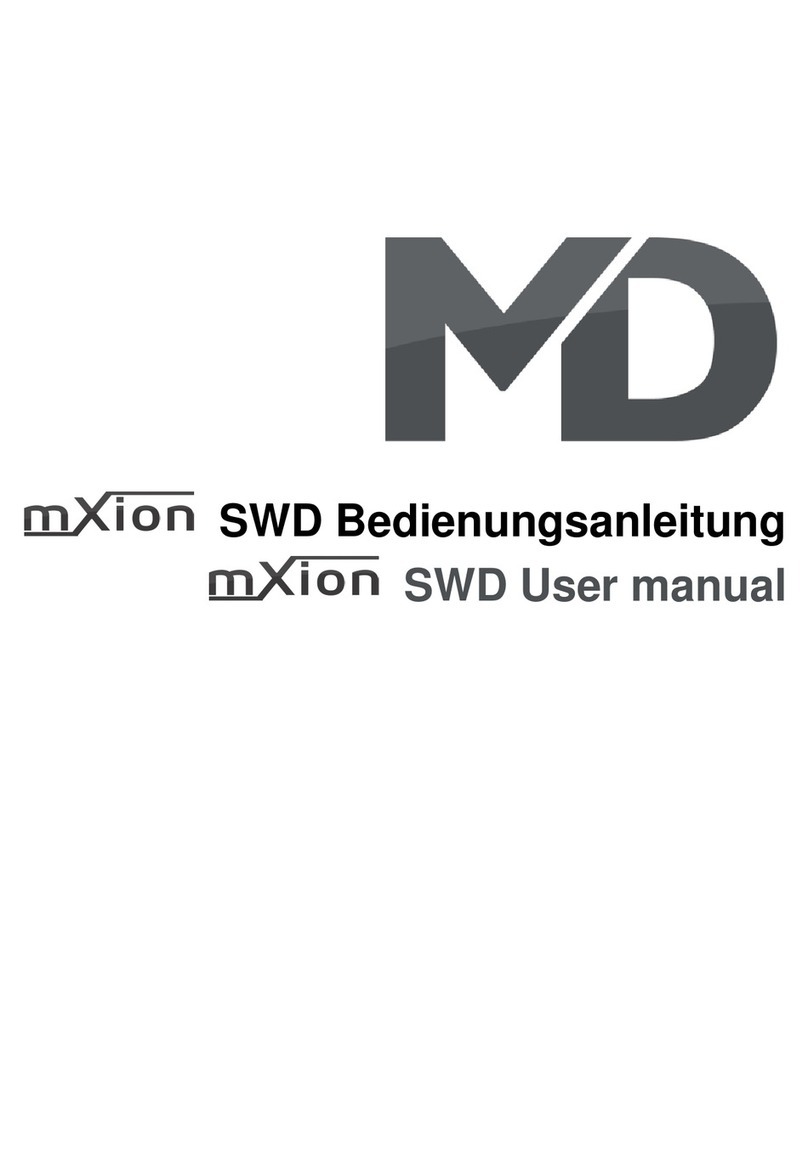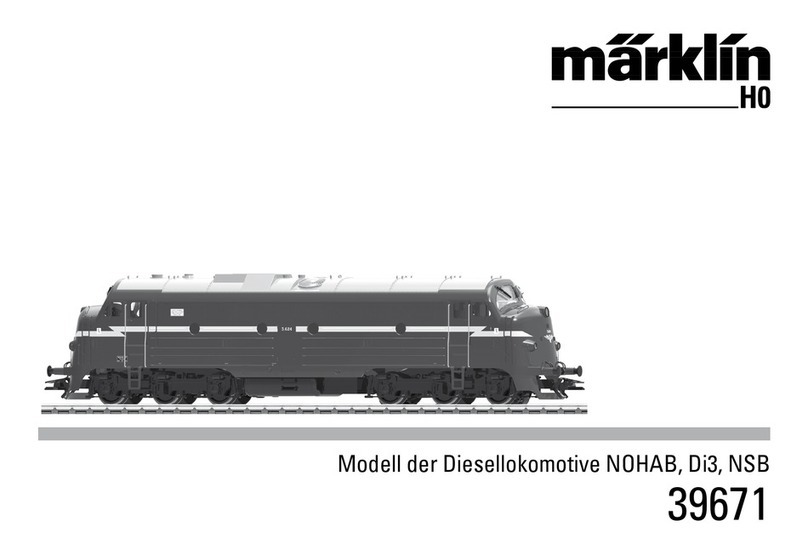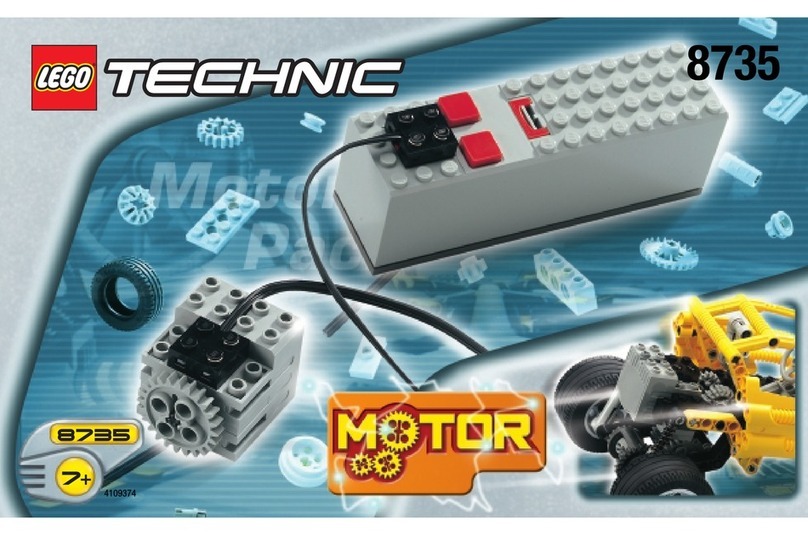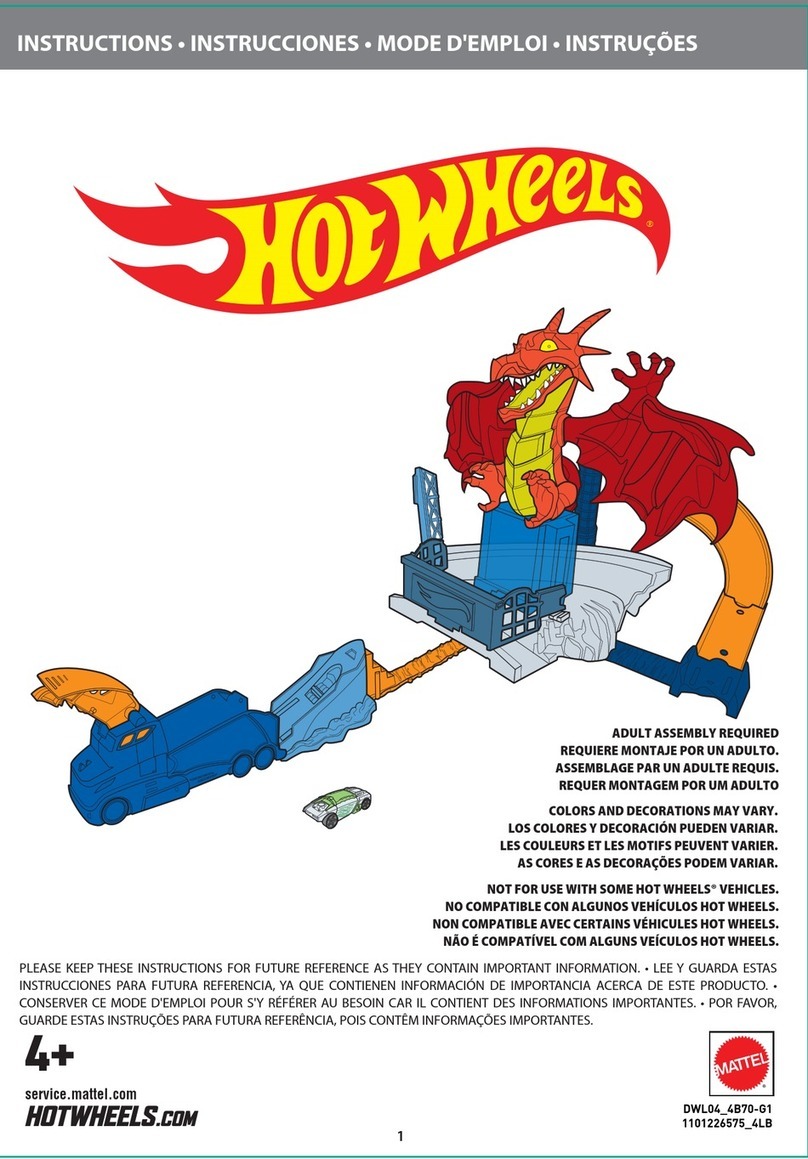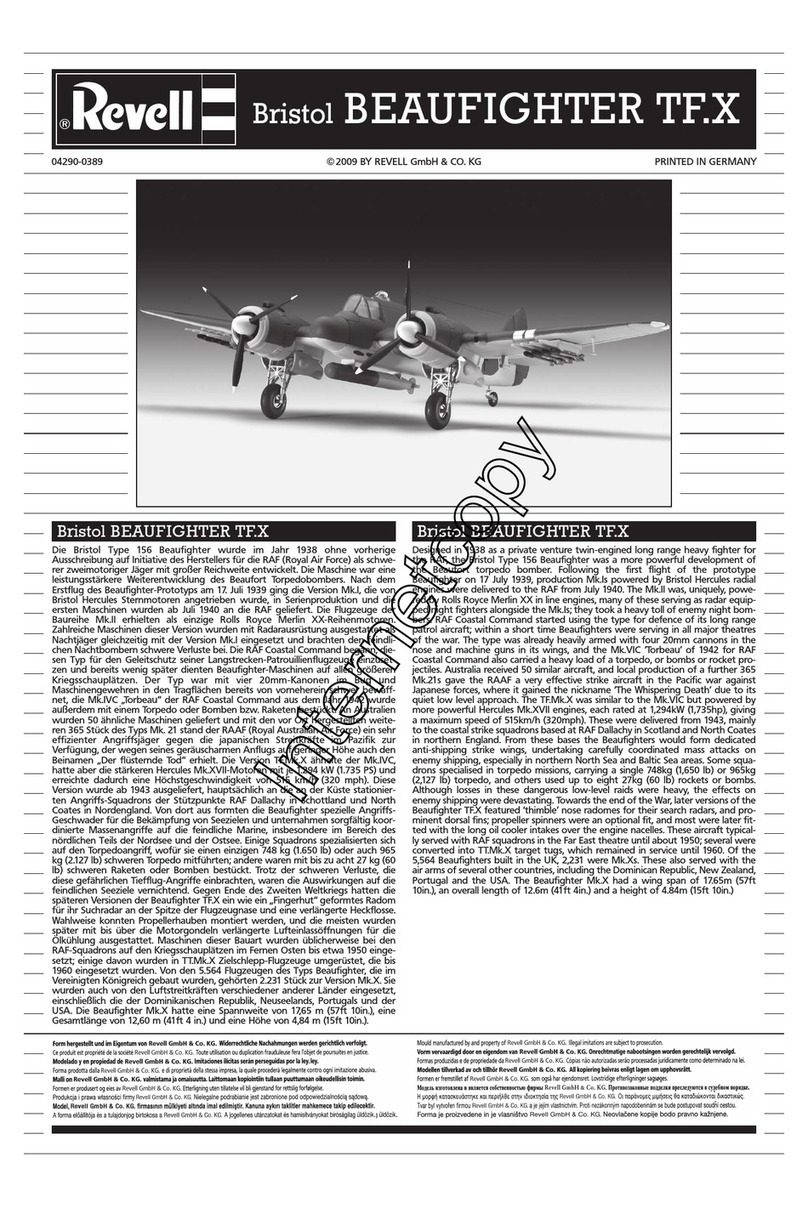5
Informations concernant la locomotive réelle :
Du fait de la concurrence du transport routier au début
des années cinquante, la DB fut amenée à rationaliser
l’exploitation des lignes de chemins de fer secondaires. En
1950 furent construits des autorails monomoteurs avec un
empattement rigide de 4500 mm et une puissance de 110 ch.
A partir de 1952 furent livrés au total 572 véhicules de la sé-
rie VT 95. Il s’avéra rapidement que la puissance du moteur
et la transmission sur un seul essieu n’étaient pas toujours
suffisantes. C’est pourquoi trois véhicules bimoteurs, qui
correspondaient par ailleurs entièrement au VT 95, furent
construits dès 1952.
A partir de 1955 furent livrées 332 automotrices de la série
VT 98 avec une puissance moteur de 2 x 150 ch et une vites-
se maximale de 90 km/h ainsi que 310 voitures-pilotes VS 98
et 320 remorques VB 98. Tous les véhicules possédaient un
empattement rigide de 6000 mm et une longueur identique.
Contrairement aux prototypes VT 95 et VT 98, les véhicules
étaient équipés de tampons normaux et d’attelages à vis. En
1968, les autorails furent intégrés dans le nouveau système
d’immatriculation. La voiture motrice devint ainsi la BR
798/797, la voiture-pilote et la remorque la BR 998/997. Elles
furent réformées à partir des années 80 et finirent à la ferraille
ou furent revendues dans toute l’Europe à des chemins de fer
privés. Au début des années 2000, seuls quelques véhicules
étaient encore conservés par des chemins de fer musées; le
«Ulmer Spatz», dans sa livrée vert/blanc, est encore utilisé
par la DB pour des voyages spéciaux.
En Autriche, l’autorail était immatriculé dans la série 5081 et
était doté d’une livrée bleu/blanc. Il circulait également en
Belgique, Yougoslavie, Espagne et au Luxembourg.
Informatie van het voorbeeld
Aan het begin van de vijftiger jaren moest de DB het bedrijf
op de neventrajecten rationaliseren vanwege de concurren-
tie met de auto. In 1950 werden de railbussen met een asaf-
stand van 4500 en een motorvermogen van 110 pk gebouwd.
Vanaf 1952 werden in totaal 572 voertuigen van de serie
VT 95 geleverd. Al snel werd duidelijk dat het motorvermo-
gen en de aandrijving op één as niet altijd toereikend waren.
Daarom werden er in 1952 al drie tweemotorige voertuigen
gebouwd, die verder identiek waren aan de VT 95.
Vanaf 1955 werden er in totaal 332 treinstellen van de serie
VT 98 met een motorvermogen van 2 x 150 pk en een ma-
ximumsnelheid van 90 km/h geleverd. Daarnaast nog 310
stuurstandrijtuigen VS 98 en 320 bijwagens VB 98. Alle vo-
ertuigen hadden een asafstand van 6000 mm en waren even
lang. In tegenstelling tot de prototypes van de VT 95 en de
VT 98, waren er echter normale buffers en schroefkop-
pelingen aangebracht. In 1968 werd de railbus in het ni-
euwe nummerschema opgenomen. Het motorrijtuig werd
BR 798/797, het stuurstandrijtuig en de bijwagen BR 998/997.
In de tachtiger-jaren begon de buitendienststelling. Ze wer-
den verschroot of door heel Europa aan diverse private
spoorwegmaatschappijen verkocht. Rond de eeuwwisseling
waren er nog slechts enkele voertuigen beschikbaar voor
speciale ritten bij museumspoorwegen en bij de DB in de
groen/witte kleuren als “Ulmer Spatz”.
De railbus was in Oostenrijk als serie 5081, in blauw/witte
kleuren, in bedrijf. Ze reden ook in België, Luxemburg, Joe-
goslavië en Spanje.
